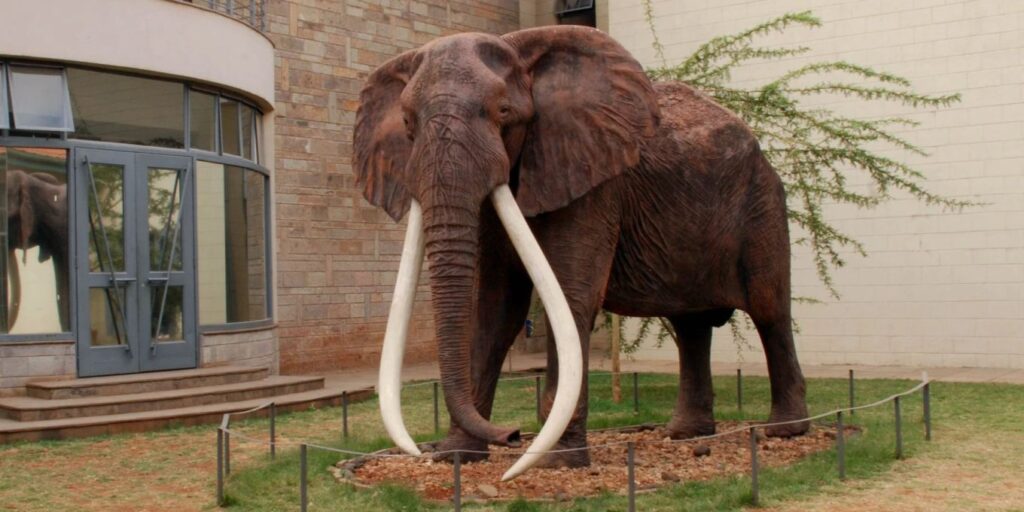Der Elefantenbulle Ahmed, also known as “Ahmed the Elephant Bull,” stands as one of the most famous and celebrated elephants in the world. With his extraordinary size, majestic tusks, and presence in the savannahs of Kenya, Ahmed has become an iconic symbol of wildlife conservation and the natural beauty of Africa. His story is a powerful reminder of the delicate balance between nature and humanity’s responsibility to protect endangered species.
This article will explore the life of Ahmed, his role in elephant conservation, and the legacy he left behind.
Table of Contents
The Magnificent Elefantenbulle Ahmed
Der Elefantenbulle Ahmed , born in the mid-20th century, was a majestic African elephant bull known for his enormous size and striking tusks that extended well beyond his trunk. He roamed the landscapes of Marsabit National Park in northern Kenya, becoming a natural wonder to behold for tourists, researchers, and locals alike. Standing at a remarkable height of over 3 meters (around 10 feet), Ahmed was one of the largest and most impressive elephants ever recorded.
His majestic presence, however, also made him a target for poachers. The 1960s and 1970s marked a period of intense ivory poaching in Africa, and elephants like Der Elefantenbulle Ahmed, with their immense tusks, were at great risk. In response, wildlife enthusiasts and conservationists recognized the need to protect Ahmed, not just for his unique beauty but as a symbol of Kenya’s rich biodiversity.

Protection and Presidential Decree
Due to the growing threat of poaching and the symbolic importance Der Elefantenbulle Ahmed held, Kenya’s first President, Jomo Kenyatta, made an unprecedented decision. In 1970, President Kenyatta issued a special decree declaring Ahmed a “protected” elephant. This decree was significant because it ensured that Ahmed would be under constant surveillance by armed guards. The president’s intervention was a bold move, illustrating the importance of protecting wildlife, even if it required drastic measures.
Ahmed became a living legend, often referred to as “the presidential elephant” due to his unique status. With constant guards to protect him, Der Elefantenbulle Ahmed was able to live out his days peacefully in Marsabit National Park, free from the immediate dangers of poaching. His survival became a symbol of Kenya’s dedication to wildlife conservation during a time when elephants were being slaughtered across Africa for their ivory.
Ahmed’s Role in Conservation Awareness
Ahmed was not just an extraordinary elephant—he was a symbol of the conservation movement. His protection under a presidential decree garnered significant international attention, highlighting the plight of African elephants and the devastating impact of poaching on their populations. By focusing on Ahmed, conservationists were able to bring awareness to the broader issue of ivory poaching, which was decimating elephant populations across Africa.
In many ways, Ahmed’s protection was a precursor to more comprehensive wildlife conservation efforts in Kenya and beyond. The attention he brought to the poaching crisis helped to spark conversations about the need for stronger anti-poaching laws, better enforcement, and international cooperation to reduce the demand for ivory. Der Elefantenbulle Ahmed became a symbol of hope for many who were fighting to save the African elephant from extinction.
Ahmed’s Later Years and Legacy
Ahmed lived a long and peaceful life, thanks in large part to the protection he received. He roamed Marsabit National Park, living in his natural habitat with the freedom to interact with his surroundings and fellow elephants. His majestic tusks continued to grow, reaching impressive lengths that made him even more iconic.
Ahmed died of natural causes in 1974, likely at the age of around 55 years. Upon his death, it was clear that Ahmed’s legacy would continue to inspire future generations. In recognition of his importance to conservation efforts and his status as a symbol of Kenya’s wildlife, a life-size replica of Der Elefantenbulle Ahmed was created and placed in the Nairobi National Museum, allowing future generations to witness his majesty.
Even in death, Ahmed’s influence remained strong. His story continued to raise awareness about the urgent need to protect Africa’s remaining elephants from poachers. To this day, Der Elefantenbulle Ahmed remains a reminder of the profound impact that one animal can have on a nation’s conservation efforts.
The Global Elephant Conservation Movement
Ahmed’s story is just one chapter in the larger narrative of elephant conservation in Africa. While Ahmed was fortunate to have been protected, countless other elephants have not been as lucky. The illegal ivory trade continues to pose a significant threat to elephant populations across the continent, with poachers targeting these gentle giants for their tusks.
However, Der Elefantenbulle Ahmed’s legacy helped spark global efforts to combat poaching. International organizations, governments, and non-profits have since joined forces to reduce the demand for ivory, strengthen anti-poaching measures, and protect elephants in the wild. Thanks to these collective efforts, elephant populations have begun to recover in some areas, though the fight is far from over.
Today, elephants are recognized as a keystone species, playing a crucial role in maintaining the ecosystems they inhabit. Protecting them not only preserves the beauty and diversity of Africa’s wildlife but also supports the ecological balance that benefits countless other species.
Lessons from Ahmed’s Story
Ahmed’s life teaches us several important lessons about wildlife conservation and our responsibility to protect endangered species. His story highlights the fact that individual animals can become symbols of larger conservation movements, inspiring people to take action. Der Elefantenbulle Ahmed also demonstrates that strong leadership and decisive action—such as the presidential decree that protected him—can have a profound impact on the preservation of wildlife.
Ahmed’s legacy continues to resonate today, reminding us that the protection of endangered species is an ongoing battle. While much progress has been made since Ahmed’s time, the threat of poaching, habitat loss, and human-wildlife conflict remains. It is up to governments, conservationists, and individuals to continue advocating for the protection of these incredible creatures.
The Importance of Continued Conservation Efforts
Although Der Elefantenbulle Ahmed is no longer with us, his story serves as a powerful reminder of the importance of continued conservation efforts. Protecting elephants and other endangered species requires more than just local action—it demands a global commitment to ending illegal wildlife trade, preserving habitats, and promoting sustainable coexistence between humans and wildlife.
In today’s world, conservationists are fighting not only against poachers but also against the broader threats of climate change, deforestation, and human expansion into wildlife habitats. These issues, combined with the ongoing demand for ivory, make it clear that the fight to protect elephants is far from over.
However, stories like Ahmed’s give us hope. His survival and protection during a time of rampant poaching demonstrate that change is possible when people come together to take action. With increased awareness, education, and collaboration, we can continue to make progress in protecting elephants and other endangered species.

Conclusion: The Lasting Legacy of Der Elefantenbulle Ahmed
Der Elefantenbulle Ahmed’s story is one of survival, resilience, and hope. From his early days roaming the savannahs of Kenya to his protection under a presidential decree, Ahmed’s life is a testament to the power of wildlife conservation. His legacy has inspired countless individuals and organizations to work towards protecting elephants and preserving the natural world for future generations.
Although Ahmed passed away decades ago, his spirit lives on in the hearts of those who continue to fight for the conservation of African elephants. His life reminds us that even in the face of overwhelming challenges, one individual—whether human or animal—can make a significant difference.
Today, as we reflect on Ahmed’s story, we are reminded of the importance of preserving the beauty and diversity of our planet. By honoring Ahmed’s legacy and continuing the fight to protect elephants, we can ensure that these magnificent creatures will continue to roam the wild for generations to come.

FAQs About Der Elefantenbulle Ahmed
1. Who was Ahmed the Elephant?
Ahmed was a famous African elephant bull known for his large size and iconic tusks. He lived in Marsabit National Park in Kenya and was protected by a presidential decree due to the threat of poaching.
2. Why was Ahmed important to conservation?
Ahmed became a symbol of the fight against poaching and the broader efforts to protect Africa’s elephants. His protection raised awareness about the dangers of the illegal ivory trade.
3. How long did Ahmed live?
Ahmed lived to be around 55 years old, a typical lifespan for an African elephant. He passed away of natural causes in 1974.
4. What legacy did Ahmed leave behind?
Ahmed’s legacy is one of hope and inspiration for conservation efforts. His story continues to remind us of the importance of protecting endangered species and fighting against poaching.
5. How can we continue to protect elephants like Ahmed?
Protecting elephants requires global efforts to combat poaching, preserve habitats, and reduce the demand for ivory. Continued support for conservation organizations and policies is crucial to ensuring the survival of elephants in the wild.


